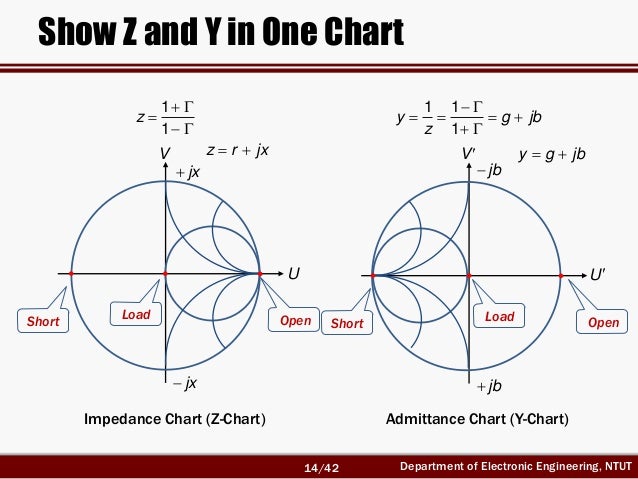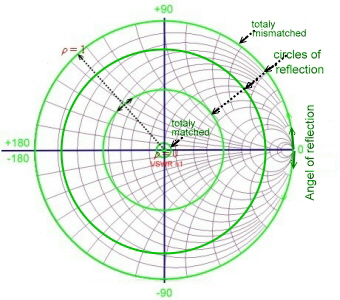

A stub is a short-circuited or open-circuited section of a transmission line. When you measure it, the result is also an arc on the Smith chart.\)(a). and matching network design is the Smith Chart (invented by Phillip H. For mechanical construction reasons, the actual short circuit is a small distance away from the calibration plane, so the short standard looks like a short circuit at the end of a very short transmission line. In most cal kits, this same argument applies to the short standard as well. Because the goal of the calibration is to make your measurement system give accurate results, and the open standard is not ideal, so it is correct that the calibrated measurement system to report the OPEN has some capacitance value! The admittance Smith chart provides a plot of the normalized admittance y g + jb in the -plane, where g and b, respectively, represent the conductance and susceptance of y. All of these imperfections are included in the model of the open as described in the calibration kit. It has nonlinear fringing capacitance, electrical length, and possibly some loss due to radiation. To demonstrate the concept, let us consider the case of short-circuited shunt stub matching presented in the lower part of. We understand that a PERFECT OPEN has a reflection coefficient of one at an angle of zero degrees at all frequencies. However, the cal kit's OPEN standard is not an IDEAL open. The points are plotted as follows: z1 2 + j z2 1.5 -j2 z3 j4 z4 3 z5 infinity z6 0 z7 1 z8 3.68 -j18S Smith Chart Thus, the first step in analyzing a transmission line is to locate the normalized load impedance on the chart Next, a circle is drawn that represents the reflection coefficient or SWR. To verify your understanding that the locus of the refection coefficient rotates in the clockwise direction, i. This measurement result is actually correct - there is nothing wrong with the network analyzer system or the calibration.

but in fact the measurement of the open will look like an arc instead of a dot.

Question When we measure the OPEN or SHORT reflection on a VNA, why the results is in arcs, but not a dot, on a Smith Chart as most people expect?Īfter performing a one-port or two-port calibration on your network analyzer, some people expect to see a perfect dot at the edge of the Smith chart. Frequently Asked Questions (FAQs) SummaryIt’s normal to get an arcs instead of a dot for OPEN and SHORT calibration kit in Smith Chart after the calibration.


 0 kommentar(er)
0 kommentar(er)
